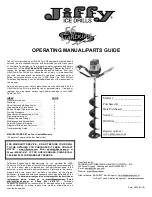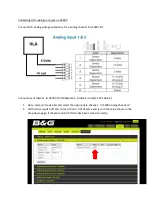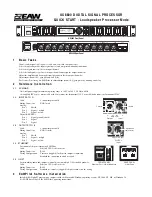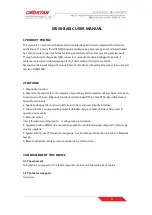
1941970
V1.3
3 March 2020
Installation:
This Lifelight Pro Surface Mount Non-Maintained Emergency Luminaire can be installed on solid or T-
BAR ceilings or used to replace an existing unit.
•
Locate the installation position.
•
Remove the top cover (containing the control gear) from the base plate via the two fixing screws on
the top cover. Disconnect the mains supply cable via the connector between the base and top
cover.
•
Refer Images and Dimensions below for the Cut-out Hole and other dimensions.
•
Pre-drill mounting holes.
•
Mount base plate and use suitable fixings to secure the base plate into the pilot holes.
•
Bring in supply cables via the rear entry hole or via the end of the base plate (surface mount
conduit entry).
•
Terminate the supply cables to the L, N & E terminals (in the case of the –DALI or –DATA fittings
terminate the DALI or DATA cable to the terminals marked Da Da or DATA).
•
Install the top cover, containing the control gear, ensuring to reconnect the control gear assembly
to the connector from the supply terminal block.
•
Ensure the Battery is connected.
•
Screw the cover to the base plate, and in the case of side/conduit entry remove the knock-out at
the end of the cover to go cover the conduit.
•
If the CTP capabilities are activated, please affix the CTP status label to a visible surface and Four
Segment Marking on the product will include an ‘’F’’ in third segment block.
Networking:
When installing the product on a monitored network, (ZONEWORKS, DATA, DALI) simply insert the
relevant Smart Node PCA.
Images & Dimensions:
Testing:
When the Lifelight Pro Surface Mount Non-Maintained Emergency Luminaire unit is connected to the
un-switched active, it must be allowed to charge the battery for at least 24 hours. The emergency lamp
only illuminates during a power fail. Conduct the following tests:
•
The emergency lamp must illuminate for at least 2 hours after disconnection from the mains. The
results of all tests are required to be recorded in a service logbook, which is to be kept on-site at all
times. If the unit fails to illuminate for the requisite time, remedial action must be taken to repair the
situation and once completed, the unit must pass a subsequent test.
•
Press and hold Test Button or switch Off Mains Supply, check that the emergency lamp is On.
•
Release the Test Button or Switch On Mains Supply, check that the emergency lamp is Off (Non-
maintained operation).
Trouble Shooting:
Below are a list of common problems and their possible causes.
Fault: The Green LED indicator is not illuminated.
Check: A.C. is connected and is turned on.
Battery is connected.
Test Switch for damage.
Fault: Lamp does not illuminate in emergency mode.
Check: A.C. is connected.
Lamp is correctly inserted.
Battery is connected
Fault: Lamp illuminates in emergency mode, but only stays on for a short period.
Check: Battery has been allowed to charge for at least 24 hours.
Battery for damage.
Rated Emergency Lumen Output in accordance with AS2293.1, (refer to
spacing tables for installation positions):
Refer to the Technical Label for classification information.
Caution:
On many building sites, power circuits may be cut off in an uncontrolled and repetitive basis during
construction. As a result, any Exit & Emergency Units, on these circuits, will have their batteries
discharged or “cycled”. The battery in this fitting has been selected to give excellent long-life
performance in a controlled AS2293 testing environment. Excessive battery cycling will reduce through-
life performance and may lead to premature battery failure. Battery warranty claims, as a result of such
abuse, are specifically EXCLUDED from Clevertronics warranty terms.
Warranty:
For Product Warranty information and Terms and Conditions of Sales please refer to our website
http://clevertronics.com.au/terms-conditions-sale-australia-nz/
Mains entry hole




















